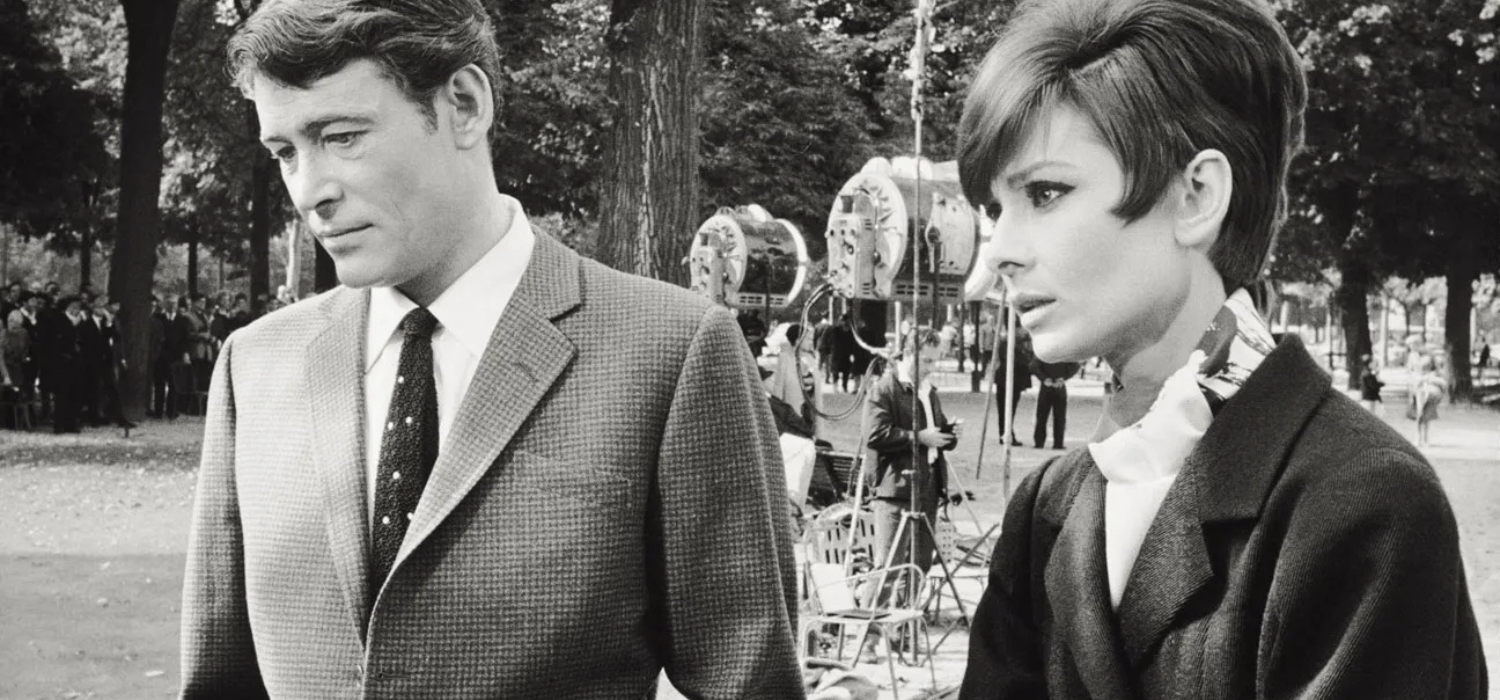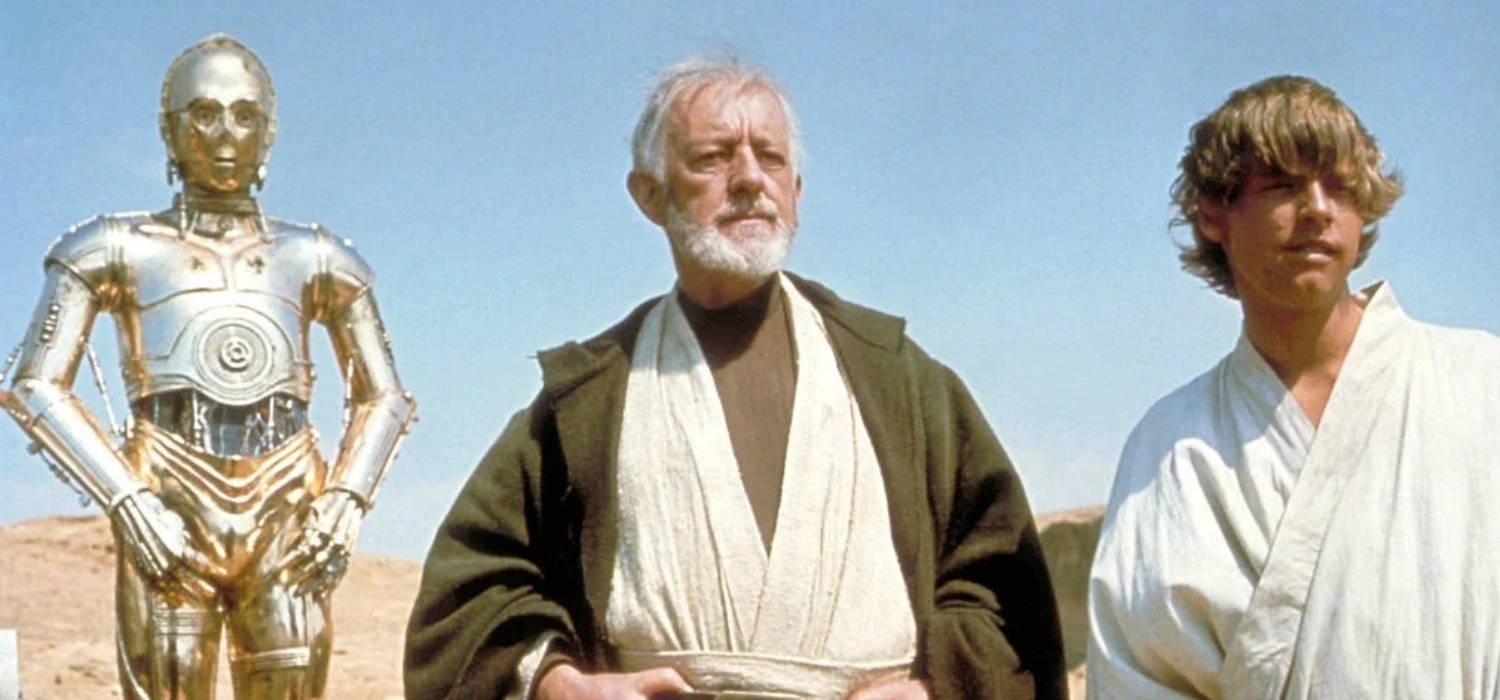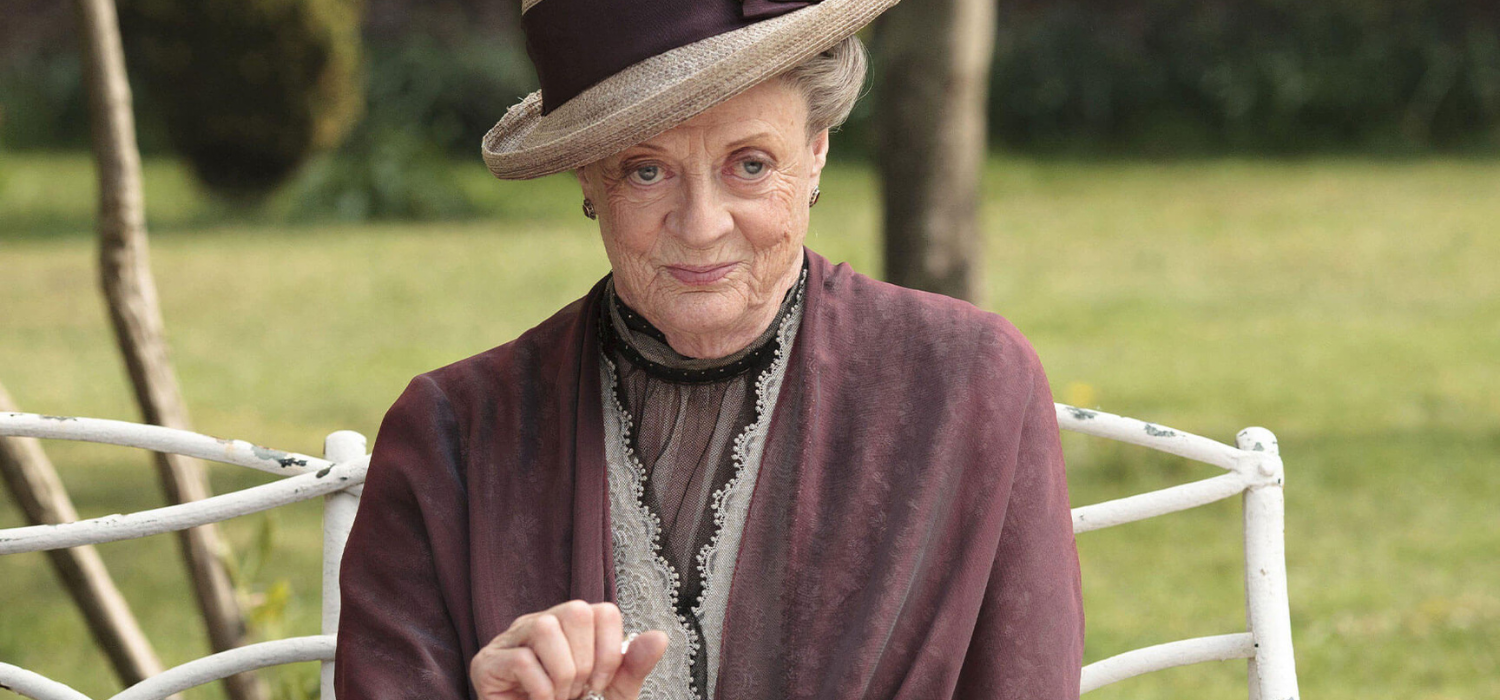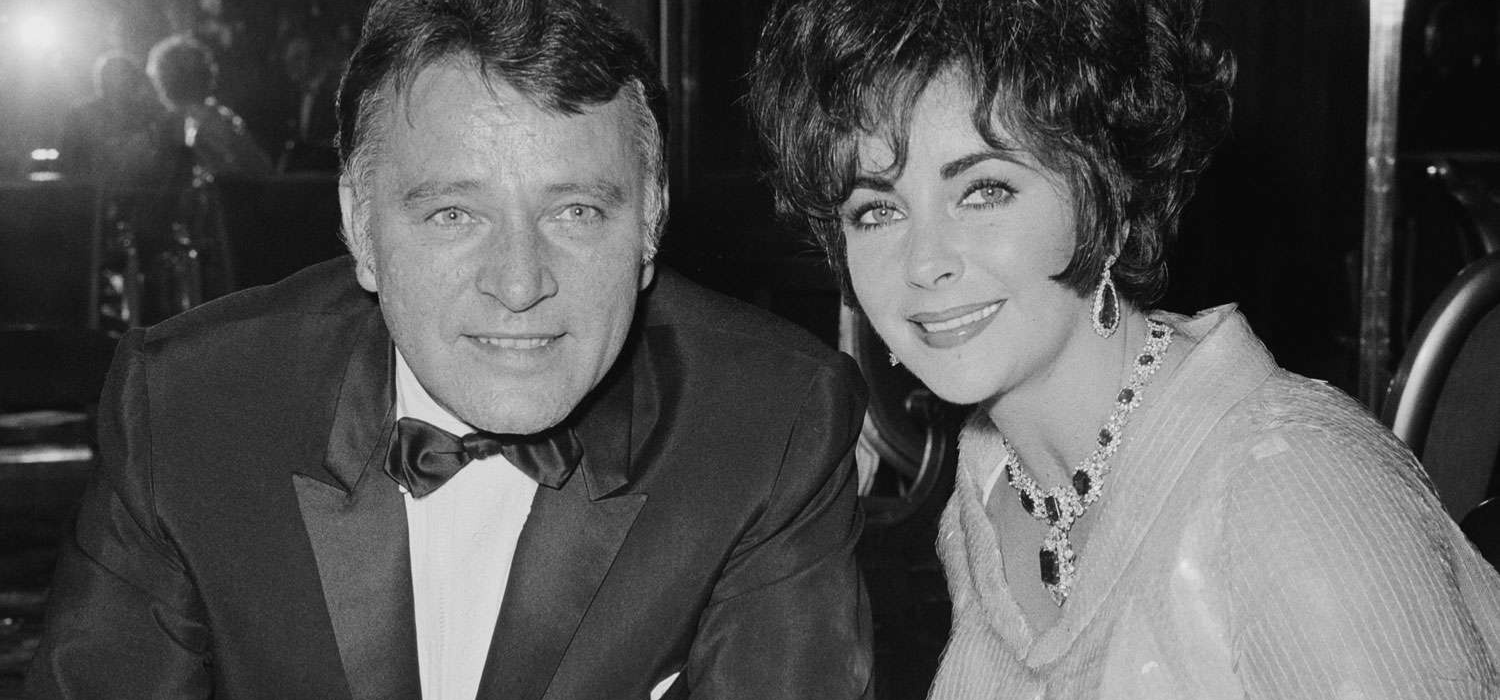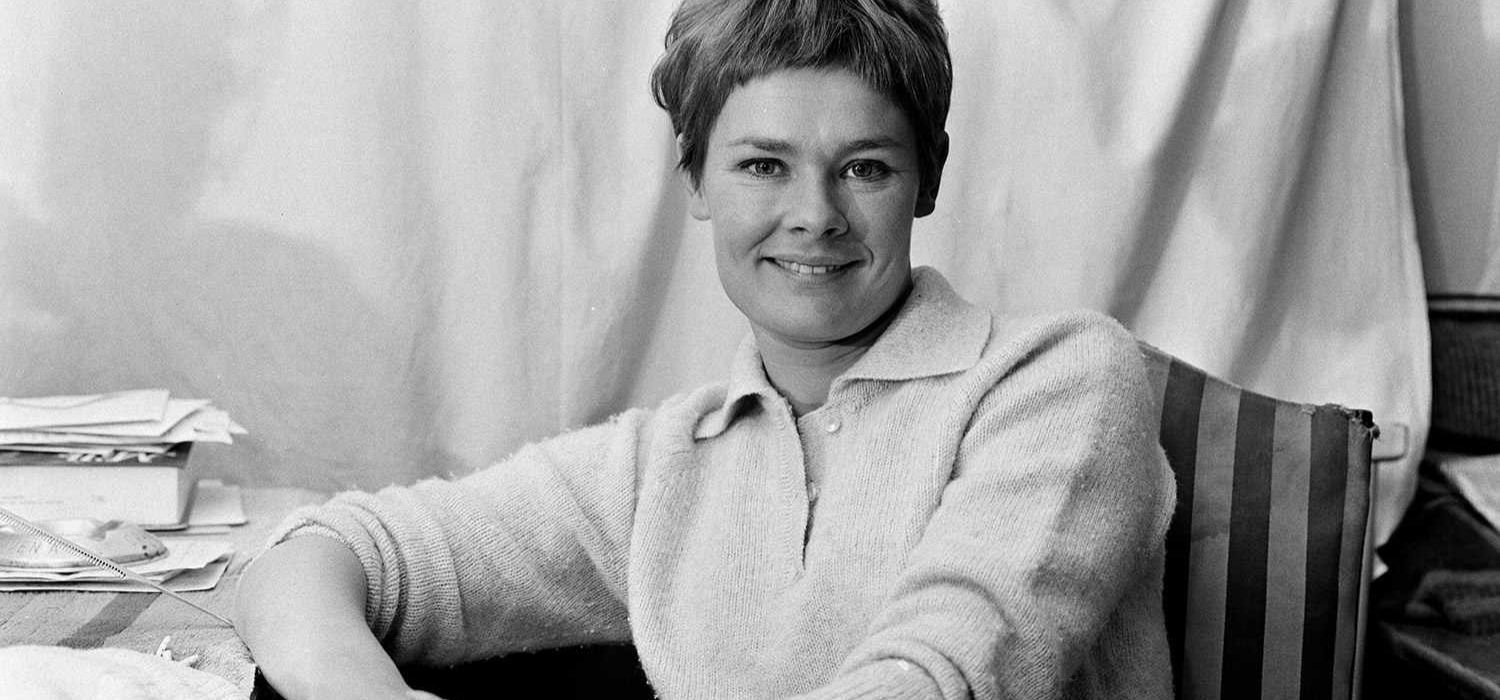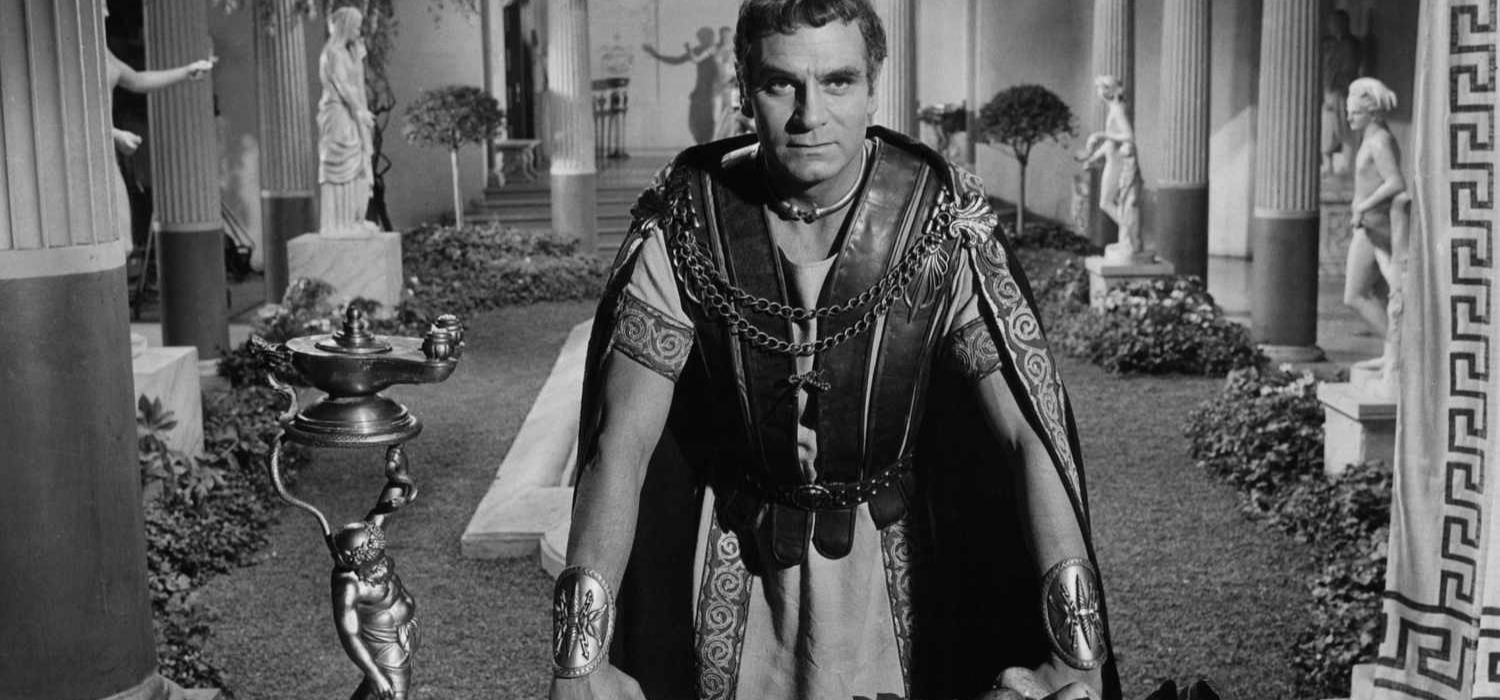Introduction: A Legend of the Silver Screen Peter O’Toole remains one of the most celebrated and iconic figures in British and global cinema. Known for his towering presence, magnetic charisma, and unmatched performances, O’Toole’s career stretched over five decades. His story is not just about acting; it’s about resilience, reinvention, and brilliance. From stage beginnings to Oscar-nominated roles, O’Toole set a standard for cinematic artistry that continues to inspire. Early Life and Aspirations Born in 1932, Peter O’Toole grew up in Ireland and England, discovering his love for storytelling and performance at an early age. His childhood was marked by curiosity and a sense of drama, qualities that would shape his career. The Stage Beckons O’Toole trained at the Royal Academy of Dramatic Art (RADA), where his natural talent and ability to inhabit complex characters became apparent. This classical foundation gave him the skills to tackle Shakespeare and other demanding works, building a reputation as one of the finest actors of his generation. Breakthrough Role: Lawrence of Arabia (1962) The defining moment of Peter O’Toole’s career came with his role as T.E. Lawrence in David Lean’s Lawrence of Arabia. This role not only made him an international star but also cemented his place as a cinematic icon. The Eight Oscar Nominations Peter O’Toole’s career was remarkable for his record-breaking eight Academy Award nominations for Best Actor without a win during his lifetime (he received an Honorary Oscar in 2003). The List of Legendary Performances Each of these roles demonstrated his versatility—from kings and warriors to eccentric artists and vulnerable older men. O’Toole transformed himself for every part, bringing both grandeur and humanity to his characters. Stage Brilliance: Shakespeare and Beyond Though film brought him global recognition, O’Toole never abandoned the stage. His performances in Shakespearean roles such as Hamlet, Macbeth, and King Lear are remembered for their intensity and intellectual depth. Personal Life: The Man Behind the Legend O’Toole’s personal life was as colorful as his career. Known for his wit, charm, and at times controversial lifestyle, he lived life to the fullest. Influence on Future Generations Peter O’Toole’s influence extends far beyond his own body of work. Cinematic Legacy of Elegance and Brilliance Peter O’Toole’s brilliance lies in his ability to make every role unforgettable. His combination of striking looks, eloquent voice, and fearless approach made him a true legend. In-Depth Look at Oscar-Nominated Roles Becket (1964) After the monumental success of Lawrence of Arabia, O’Toole starred alongside Richard Burton in Becket. The Lion in Winter (1968) O’Toole reprised his role as Henry II, this time opposite Katharine Hepburn. Goodbye, Mr. Chips (1969) A departure from epic roles, O’Toole played the quiet, dedicated schoolteacher Mr. Chipping. The Ruling Class (1972) In one of his most daring performances, O’Toole played Jack, a schizophrenic aristocrat who believes he is Jesus Christ. The Stunt Man (1980) This cult classic featured O’Toole as an eccentric film director. My Favorite Year (1982) As a washed-up actor in a comedy inspired by 1950s television, O’Toole delivered a performance filled with humor and heart. Venus (2006) Late in his career, O’Toole starred as Maurice, an aging actor navigating love and mortality. Bonds with Fellow Actors Richard Burton and the Brotherhood of Legends Peter O’Toole and Richard Burton shared more than screen time; they shared a lifestyle marked by brilliance and excess. Richard Harris and the Circle of Rebels O’Toole, Burton, and Harris were often described as part of a “trinity” of Irish and British acting legends. Katharine Hepburn: A Worthy Adversary Hepburn’s collaboration with O’Toole in The Lion in Winter was electric. Behind the Scenes: Stories and Anecdotes A Life of Wit O’Toole was famous for his sharp sense of humor. One of his most quoted lines: “I will not be a common man. I will stir the smooth sands of monotony.” This wit carried into his interviews, where he often entertained audiences as much as on-screen. Hollywood Outsider Though a star, O’Toole never quite fit the mold of a Hollywood actor. He was outspoken, unconventional, and sometimes resistant to industry norms. Resilience Through Illness Health challenges in the 1970s threatened his career, yet O’Toole returned with renewed vigor, proving his determination to continue acting despite the odds. His Relationship with Cinema For O’Toole, acting was not just work; it was a calling. The Actor’s Philosophy O’Toole often spoke about acting as an exploration of humanity. Awards and Recognition Academy Award Journey Other Prestigious Awards Cultural Legacy The Image of the Actor as Rebel O’Toole redefined what it meant to be a film star. Enduring Relevance in Pop Culture Passing in 2013 Peter O’Toole passed away in December 2013, leaving behind a cinematic and theatrical legacy that will never fade. Conclusion: The Timeless Brilliance of Peter O’Toole Peter O’Toole was more than an actor—he was a force of nature. From his transformative role in Lawrence of Arabia to his poignant farewell in Venus, his career reflected the highs, challenges, and magic of cinema. He was a man of paradoxes—both rebel and scholar, both romantic and realist, both legend and human. His brilliance continues to inspire actors and filmmakers, ensuring that his performances remain as powerful today as when they first lit up the screen. Peter O’Toole may be gone, but his spirit—fearless, witty, and profoundly artistic—lives on in the golden glow of the cinema screen.
Dame Julie Andrews: The Voice of a Generation
Introduction: A Timeless Icon Few names in entertainment history resonate as powerfully as Dame Julie Andrews. For over seven decades, she has captivated audiences with her extraordinary voice, effortless grace, and commanding stage presence. Known for her iconic roles in Mary Poppins, The Sound of Music, and numerous other films, Julie Andrews represents much more than a star of stage and screen—she embodies endurance, resilience, and artistic excellence. Her voice, once described as crystalline and angelic, became the soundscape of an era. For generations, children and adults alike have grown up humming her songs, imitating her elegance, and marveling at her versatility. From Broadway triumphs to Disney classics, from concert halls to directing and writing, Andrews’s career showcases not only her talent but also her ability to reinvent herself in the face of challenges. To call her “The Voice of a Generation” is not an exaggeration; it is a tribute to her impact across cultures, continents, and decades. Early Life: A Childhood Marked by Music and Struggle Julie Andrews was born Julia Elizabeth Wells on October 1, 1935, in Walton-on-Thames, Surrey, England. Her early life was a mixture of hardship and discovery. Her parents, Barbara Ward Wells and Edward Charles Wells, divorced when Julie was young. Her mother later married Ted Andrews, whose name Julie would eventually take. It was during this turbulent childhood that Julie’s extraordinary musical gift was first recognized. Her stepfather was a vaudeville performer who, despite his own career challenges, recognized the young girl’s extraordinary potential. Julie began vocal training at an early age, studying under acclaimed voice teacher Madame Lilian Stiles-Allen. Her talent was nothing short of astonishing. By the age of ten, Andrews possessed a four-octave vocal range—an extraordinary rarity even among professional singers. Her teacher often marveled at her voice, describing it as “the purest and most remarkable voice I have ever heard.” This musical gift would soon change the trajectory of her life. The Prodigy on Stage: Julie’s First Performances Julie’s formal introduction to audiences came during World War II, when she performed for British troops and appeared in variety shows. Her angelic voice, coupled with her remarkable stage presence, made her a standout even as a child performer. At age 12, she made her professional solo debut at the London Hippodrome, singing difficult operatic pieces with confidence and ease. The audience was stunned—not only by her voice but by the sheer maturity with which she delivered each performance. Newspapers soon began referring to her as a “child prodigy.” This early exposure gave Andrews a foundation in stagecraft that would prove invaluable. Unlike many child performers who struggled to transition into adult roles, Julie’s talent was so advanced that it naturally matured alongside her. By her teenage years, she was performing in West End musicals and operettas, steadily gaining recognition as a rising star. Broadway Dreams: Arrival in America In 1948, Julie Andrews made her West End debut in Starlight Roof. Word of her immense vocal talent spread quickly, and by the early 1950s, she was already a prominent name in British theater. However, it was her move to the United States that truly catapulted her career. At just 19 years old, Julie made her Broadway debut in 1954, playing Polly Browne in The Boy Friend. The role was relatively small, but her performance was unforgettable. Audiences and critics were enchanted, and it was clear that Broadway had found its newest sensation. Her big break came shortly after when she was cast in My Fair Lady (1956), portraying Eliza Doolittle opposite Rex Harrison. Andrews’s transformation from a cockney flower girl to a refined lady showcased her extraordinary range—not only vocally but also dramatically. My Fair Lady became one of the most celebrated musicals in theater history, and Andrews’s performance earned her international acclaim. She followed this with another major Broadway role in Camelot (1960), starring opposite Richard Burton as Queen Guinevere. Once again, Andrews dazzled audiences, proving herself to be a performer of unmatched versatility and elegance. The Hollywood Leap: ‘Mary Poppins’ By the early 1960s, Julie Andrews was a household name in theater, but Hollywood had not yet recognized her full potential. That changed dramatically in 1964, when Walt Disney personally cast her in the title role of Mary Poppins. This casting decision was remarkable. Andrews was relatively unknown to film audiences, but her ability to combine impeccable singing, acting, and charm made her the perfect choice. Her portrayal of the magical nanny was nothing short of groundbreaking. Mary Poppins became a global phenomenon, blending fantasy, music, and heartwarming storytelling. Songs like “A Spoonful of Sugar” and “Supercalifragilisticexpialidocious” became instant classics, while Andrews’s warm yet commanding presence turned the character into a cultural icon. The film was both a critical and commercial triumph, earning Andrews the Academy Award for Best Actress in 1965. It was her very first film role, and she won Hollywood’s highest honor. Few debuts in cinematic history can compare to this achievement. ‘The Sound of Music’: Cementing Her Legacy If Mary Poppins made Julie Andrews a star, The Sound of Music (1965) made her a legend. Directed by Robert Wise and adapted from the Rodgers and Hammerstein stage musical, the film cast Andrews as Maria, a spirited governess who brings music and joy into the lives of the von Trapp family. The role was tailor-made for her. With songs like “Do-Re-Mi,” “My Favorite Things,” and “Climb Ev’ry Mountain,” Andrews showcased the full brilliance of her voice. Her portrayal of Maria radiated optimism, strength, and compassion—qualities that audiences around the world embraced. The film became a cultural phenomenon, winning five Academy Awards, including Best Picture, and becoming one of the highest-grossing films of all time. For generations of viewers, The Sound of Music was not just a movie—it was a touchstone of joy and inspiration. Andrews’s performance cemented her reputation as “America’s Sweetheart,” even though she was proudly British. The image of her twirling on the mountaintop, arms outstretched, singing “The hills are alive with the sound
Sir Alec Guinness: The Quintessential British Actor
Introduction: A Name Synonymous with British Acting Excellence Few names in the history of cinema resonate with such weight, dignity, and artistry as Sir Alec Guinness. His career, which spanned stage, television, and film, remains a testament to the versatility and craftsmanship that defined British acting in the twentieth century. Known for his ability to transform into characters with an almost invisible ease, Guinness never confined himself to one archetype. Instead, he shifted seamlessly from Shakespearean tragedies to lighthearted comedies, and from wartime dramas to science fiction epics. When people recall the phrase “the quintessential British actor,” it is Guinness who often comes to mind. His profound stage presence, his unique command over dialogue, and his ability to balance restraint with intensity carved him a permanent place among acting legends. But Guinness was not just a performer; he was a storyteller who elevated every script he touched. Early Life: A Quiet Beginning Born Alec Guinness de Cuffe on April 2, 1914, in Paddington, London, his childhood was not one of luxury or comfort. Raised by his mother, with little knowledge of his father’s identity, Guinness experienced a somewhat unstable early life. His introduction to the arts came through school and eventually through theater, which offered him a world where imagination could replace uncertainty. Unlike many actors of his generation, Guinness was not immediately drawn to the limelight. Instead, he had an innate shyness that seemed incompatible with stage performance. Yet, that very modesty and restraint would later become the foundation of his acting style — a style defined by subtlety, nuance, and an aversion to unnecessary flamboyance. Stage Training: Foundations of Greatness Guinness’s formal training began at the Fay Compton Studio of Dramatic Art, which prepared him for a career that would balance theater and cinema. He was particularly drawn to Shakespeare, whose plays became a recurring theme throughout his early career. Joining the Old Vic Theatre, Guinness found himself among Britain’s finest stage actors, working alongside luminaries such as John Gielgud and Laurence Olivier. His performances in Shakespearean roles — Hamlet, Richard II, Romeo — were lauded for their depth and refinement. These formative years cemented his reputation as a stage actor who could embody complex characters with understated brilliance. The Transition to Film The 1940s brought with them a gradual shift for Guinness from stage to screen. His film debut was unassuming, but it was his partnership with director David Lean that catapulted him into cinematic greatness. Together, they would collaborate on some of the most iconic films in British cinema. Guinness’s breakthrough came in Great Expectations (1946), where he played Herbert Pocket. This performance introduced audiences to his ability to bring warmth and wit to supporting roles. From there, he quickly rose through the ranks, soon becoming a leading man in his own right. Collaboration with David Lean: A Historic Partnership The Guinness-Lean partnership produced masterpieces that remain etched in the history of cinema. Oliver Twist (1948) saw Guinness take on the role of Fagin, a performance that was both memorable and controversial for its interpretation. Though criticized for its stereotypical portrayal, it remains an example of Guinness’s fearlessness in immersing himself in morally complex roles. Their collaboration reached new heights with The Bridge on the River Kwai (1957), where Guinness’s portrayal of Colonel Nicholson earned him an Academy Award for Best Actor. His performance of a rigid yet morally conflicted officer in a prisoner-of-war camp remains one of the greatest in film history. Guinness brought to Nicholson a balance of authority, vulnerability, and obsession, turning what could have been a simple war role into a profound character study. Later collaborations with Lean included Lawrence of Arabia (1962), where Guinness embodied Prince Faisal, and Doctor Zhivago (1965), where he portrayed General Yevgraf Zhivago. Each role added another layer to Guinness’s reputation as a chameleon of the screen. The Ealing Comedies: A Lighter Side While Guinness’s dramatic roles often commanded the most attention, it was in comedy that he demonstrated his remarkable versatility. His work in the Ealing comedies of the 1950s showcased a lighter, mischievous side of the actor. In Kind Hearts and Coronets (1949), Guinness famously played eight different characters — members of the D’Ascoyne family — all of whom are dispatched one by one in a darkly comic story. The performance remains one of the most extraordinary feats in cinema history, demonstrating his ability to shift accents, personalities, and mannerisms with effortless ease. Other comedic gems included The Lavender Hill Mob (1951) and The Man in the White Suit (1951), both of which revealed his impeccable timing and ability to anchor stories with a blend of charm and irony. These films established Guinness as an actor equally at home in serious drama and in playful satire. Global Recognition: Obi-Wan Kenobi and Star Wars For younger generations, Sir Alec Guinness is often best remembered as Obi-Wan Kenobi in George Lucas’s Star Wars (1977). Though Guinness initially viewed the role with skepticism — famously describing the dialogue as “rubbish” — his portrayal of the wise Jedi mentor became iconic. What made Guinness’s Obi-Wan so memorable was his ability to imbue the role with gravitas. He treated the part with the same seriousness as Shakespeare, lending authenticity to a universe of fantasy. His presence anchored the film, giving it credibility and bridging the gap between science fiction spectacle and dramatic storytelling. Though Guinness reportedly had mixed feelings about being so strongly associated with the franchise, his performance introduced him to millions of fans around the world, ensuring his legacy extended well beyond British cinema. Awards and Accolades Over his career, Guinness was recognized with numerous honors. In addition to his Academy Award for The Bridge on the River Kwai, he received multiple BAFTA Awards and a Golden Globe. He was knighted by Queen Elizabeth II in 1959 for his contributions to the arts, a recognition that placed him firmly among the most esteemed figures in British cultural history. In 1980, he received a Lifetime Achievement Academy Award,
Classic Icon: Dame Maggie Smith and Her Unforgettable Roles
Introduction: A Legend of Stage and Screen Few actors in British history have captivated audiences with as much grace, power, and versatility as Dame Maggie Smith. With a career spanning over seven decades, she has become one of the most celebrated performers in both theatre and film. Known for her wit, commanding presence, and ability to move seamlessly between comedy and drama, Maggie Smith is truly a classic icon. From Shakespearean plays to modern blockbusters, she has proven that her talent knows no bounds. This blog explores her journey, her most unforgettable roles, and the legacy she continues to build. Early Life and the Spark of Talent Childhood in Ilford and Oxford Margaret Natalie Smith was born in Ilford, Essex, in 1934. She grew up in Oxford, where her early love for performance was nurtured. Although her family was not from an entertainment background, she showed a natural inclination for drama and humor. Discovering the Stage Her interest in acting led her to study at the Oxford Playhouse School, where her remarkable voice and sharp delivery set her apart. Even in her teens, Smith demonstrated a unique blend of comedic timing and emotional intensity that would become her signature as an actress. Rising Star: First Steps in Theatre Early Theatre Work Maggie Smith made her stage debut in 1952 at the Oxford Playhouse. By the mid-1950s, she was performing with the Oxford University Dramatic Society, catching the attention of critics and directors. Joining the National Theatre and Old Vic She soon became associated with the Old Vic Theatre Company, one of Britain’s most prestigious institutions. Her work in Shakespearean productions, particularly as Desdemona in Othello, established her as a serious talent. Her ability to blend classical training with natural charisma made her stand out in a crowded field of performers. The 1960s: Breakthrough on Screen Transition to Film Maggie Smith began transitioning to film in the late 1950s and early 1960s. Her early movie roles showcased her sharp wit, but it was in 1969 that she achieved global recognition. The Prime of Miss Jean Brodie (1969) Her portrayal of the eccentric and passionate schoolteacher in The Prime of Miss Jean Brodie earned her the Academy Award for Best Actress. Smith’s performance was both commanding and nuanced, capturing the complexities of a woman who both inspires and manipulates her students. This role catapulted her into international stardom and remains one of her most iconic performances. 1970s: A Decade of Versatility Tackling Diverse Roles The 1970s saw Maggie Smith take on a variety of roles in both drama and comedy. She earned acclaim in films like Travels with My Aunt (1972) and Murder on the Orient Express (1974). Academy Recognition Smith won her second Oscar, this time for Best Supporting Actress, in California Suite (1978). Her role as an insecure actress attending the Academy Awards showcased her mastery of both vulnerability and comedy. Few actors have been able to move so seamlessly between Shakespearean tragedy and sharp comedic satire. 1980s: Establishing Herself as a Household Name Expanding Her Range During the 1980s, Maggie Smith continued to dominate both stage and screen. She starred in A Room with a View (1985), where her portrayal of the well-meaning but socially awkward Charlotte Bartlett became one of her most beloved roles. Theatre Success Alongside her film work, Smith continued to return to the stage. Her work with the Royal National Theatre and the Royal Shakespeare Company reinforced her reputation as one of the greatest stage actresses of her generation. 1990s: A New Wave of Recognition Success in Comedy and Drama Smith entered the 1990s with roles that once again highlighted her comedic brilliance. Films like The Secret Garden (1993) and The First Wives Club (1996) showcased her ability to appeal to both children and adult audiences. The Sister Act Phenomenon Her role as Mother Superior in Sister Act (1992) and Sister Act 2: Back in the Habit (1993) introduced her to a new generation of fans. Her straight-laced yet humorous performance perfectly balanced Whoopi Goldberg’s free-spirited energy, making the films enduring classics. 2000s: The Global Icon Era Harry Potter and Professor McGonagall Perhaps no role has made Maggie Smith more beloved to contemporary audiences than Professor Minerva McGonagall in the Harry Potter series (2001–2011). As the stern but fair Transfiguration professor, Smith became a central figure in one of the most successful film franchises of all time. Her sharp delivery, dry humor, and underlying warmth made McGonagall unforgettable. For millions of fans around the world, Smith is synonymous with the role, cementing her status as a pop culture icon. Gosford Park (2001) Smith also starred in Gosford Park, Robert Altman’s acclaimed period drama. Her role as the sarcastic and aristocratic Constance, Countess of Trentham, earned her yet another Oscar nomination. 2010s: Downton Abbey and New Heights The Dowager Countess of Grantham In 2010, Smith took on the role of Violet Crawley, Dowager Countess of Grantham, in Downton Abbey. Her razor-sharp wit and impeccable comic timing quickly made her the standout character of the series. Quotes from the Dowager became instantly iconic, often delivering both humor and profound truth in the same breath. Smith won multiple awards for the role, including three Primetime Emmy Awards, further proving her ability to captivate audiences well into her later years. Expanding Audiences Through Downton Abbey, Smith reached an even broader global audience. Younger viewers who knew her primarily from Harry Potter now saw her as part of another cultural phenomenon, solidifying her reputation as one of the most versatile actresses in the world. Style of Performance: What Makes Maggie Smith Unique The Power of Her Voice Maggie Smith’s distinctive voice is one of her most powerful tools. Whether delivering Shakespearean verse or sarcastic one-liners, her voice carries authority and nuance. Mastery of Comedy and Drama Few actors can master both comedy and tragedy with equal brilliance. Smith’s ability to move seamlessly between the two makes her performances dynamic and unforgettable. Commanding Presence On stage and screen, Smith commands
Richard Burton: A Legendary Voice of British Cinema
Introduction: The Voice That Captivated the World Richard Burton’s name evokes images of raw charisma, unmatched theatrical presence, and a voice often described as one of the greatest ever to grace stage and screen. From humble beginnings in Wales to the dazzling lights of Hollywood, Burton became a symbol of British talent at its finest. His career was marked not only by breathtaking performances in both classical and modern roles but also by a personal life that fascinated the public as much as his artistry. Early Life in Wales: Roots of a Legend Richard Burton was born Richard Walter Jenkins on November 10, 1925, in Pontrhydyfen, a small mining village in South Wales. Growing up in a working-class family, he faced hardship early in life—his mother passed away when he was only two, and his father was a coal miner who struggled with alcoholism. Despite these challenges, Burton’s natural intelligence and talent began to shine through in school, particularly in oratory and literature. A turning point came when his teacher, Philip Burton (who later became his legal guardian and mentor), recognized his potential. Philip nurtured the young Richard’s love for language and performance, eventually helping him develop the commanding voice that would become his trademark. It was also under Philip’s guidance that Richard Jenkins took on the surname Burton—a name destined to be remembered in theatre and film history. Education and Early Stage Experiences Burton’s early education included a scholarship to Oxford University, where he briefly studied before his military service during World War II. After the war, he returned to pursue acting more seriously, performing in theatre productions that showcased his extraordinary vocal range and magnetic presence. His earliest stage appearances included Shakespearean roles, where his booming, mellifluous voice left audiences spellbound. Critics quickly took note of his ability to embody both the grandeur and the emotional intensity of characters such as Hamlet and Henry V. The Voice That Defined a Generation Richard Burton’s voice was more than an instrument; it was a force of nature. Deep, rich, and resonant, it carried the authority of a statesman and the intimacy of a poet. Listeners described it as “liquid gold” and “the sound of thunder wrapped in velvet.” His voice set him apart from his contemporaries and helped him command attention in roles that demanded both gravitas and vulnerability. This vocal gift made Burton a natural choice for Shakespearean theatre, but it also allowed him to transition seamlessly into film, where his delivery gave depth to characters ranging from warriors to tormented lovers. Breakthrough on the Stage and Screen By the late 1940s and early 1950s, Burton had begun to establish himself as a formidable presence in the British theatre scene. His performance as Prince Hal in Henry IV and his later turn as Hamlet were widely praised, cementing his reputation as one of the most exciting young talents of his generation. In 1952, Burton starred in the film My Cousin Rachel opposite Olivia de Havilland, earning his first Academy Award nomination. His striking looks, coupled with his powerful performance, marked his arrival in Hollywood. From that point onward, Burton’s career would span across both stage and screen, bridging the gap between classical theatre and modern cinema. Hollywood Fame and International Recognition Burton’s transition to Hollywood in the 1950s and 1960s propelled him into global stardom. He appeared in epic films such as Alexander the Great (1956), The Robe (1953), and Cleopatra (1963), where his romance with Elizabeth Taylor became as legendary as the film itself. His ability to bring Shakespearean gravitas to mainstream roles earned him respect from both critics and audiences. Unlike many actors of his time, Burton was not content with playing simple heroic leads—he gravitated toward complex, flawed characters, showcasing the breadth of his dramatic skill. His performances in films like Who’s Afraid of Virginia Woolf? (1966) revealed his mastery of emotional intensity and psychological depth, earning him critical acclaim and multiple award nominations. Iconic Performances on Stage and Screen Richard Burton’s career was shaped by an impressive list of performances that remain benchmarks in British and international acting. On stage, he became synonymous with Shakespearean theatre. His Hamlet, performed for Broadway in 1964 under the direction of John Gielgud, was hailed as one of the most memorable renditions of the role in the 20th century. Audiences and critics alike marveled at his ability to breathe both intellectual rigor and emotional vulnerability into Shakespeare’s words. In film, Burton’s adaptability was astonishing. He could be equally compelling as Mark Antony in Cleopatra (1963), as the tormented George in Who’s Afraid of Virginia Woolf? (1966), or as the passionate Arthur in Camelot (1967). These roles highlighted not only his vocal command but also his ability to embody complex human emotions—jealousy, rage, tenderness, and despair—all with riveting intensity. The Elizabeth Taylor Chapter: Love and Scandal Richard Burton’s relationship with Elizabeth Taylor is one of Hollywood’s most talked-about romances. Their chemistry on the set of Cleopatra quickly turned into a passionate love affair that captivated the media. Married and divorced twice, their relationship was as fiery off-screen as it was on. The pair became a symbol of glamour, excess, and tragedy, often splashed across tabloids. Yet, beyond the scandals, their relationship produced unforgettable on-screen collaborations. Together, they starred in 11 films, including The Taming of the Shrew (1967) and Who’s Afraid of Virginia Woolf? (1966). The latter not only earned Taylor an Academy Award but also showcased Burton at his finest, with a performance critics still cite as one of his most powerful. Their love story, filled with passion, fights, reconciliations, and eventual heartbreak, defined an era in Hollywood. While their personal life often overshadowed their professional work, it also added to Burton’s aura as a larger-than-life figure. Awards and Nominations: Recognition and Frustration Richard Burton received an astonishing seven Academy Award nominations over his career, but he never won a competitive Oscar—an omission often considered one of the great injustices in Academy history. His nominations spanned films like
Timeless Grace: Dame Judi Dench’s Journey as a Classic Icon
Introduction: A National Treasure with Global Impact Few actors have managed to embody both the heart of British theatre and the glamour of international cinema quite like Dame Judi Dench. With a career spanning over six decades, she is more than an actress—she is a cultural icon, revered for her extraordinary versatility, commanding stage presence, and remarkable ability to bring depth to every role she undertakes. From Shakespearean heroines to modern film powerhouses, Dench’s legacy is one of timeless grace and undeniable brilliance. Her journey is not merely about performing but about shaping the very essence of acting itself. Whether in the intimate halls of the Royal Shakespeare Company, on the grand stages of the West End, or across global cinema screens, Dame Judi Dench has remained a symbol of dedication, artistry, and inspiration. Early Life and Family Background Judith Olivia Dench was born on 9 December 1934 in Heworth, York, England. Her father, Reginald Arthur Dench, was a doctor who worked at York’s Theatre Royal, while her mother, Eleanora Olave, was of Irish descent and deeply supportive of her daughter’s artistic pursuits. Growing up in a family where theatre was both admired and accessible, Judi was naturally drawn to the stage from an early age. The environment of York, steeped in history and culture, provided fertile ground for Dench’s early curiosity about performance. Though shy as a child, she developed a fascination with storytelling, music, and movement, all of which would later define her craft. Discovering Theatre and Training at the Central School Dench’s formal training began at the Central School of Speech and Drama in London. At first, she considered a career in set design, but her passion for performing soon became undeniable. At the Central School, she honed her voice, movement, and interpretative skills, quickly establishing herself as a student of extraordinary promise. Teachers noted her intensity and emotional range, qualities that would make her one of the most compelling performers of her generation. In 1957, she joined the Old Vic Company, one of the most prestigious theatre troupes in England, and made her professional debut as Ophelia in Hamlet. The Early Shakespeare Years Shakespeare’s plays became the foundation of Dench’s career. In her early years, she portrayed a range of heroines, from Juliet in Romeo and Juliet to Lady Macbeth in Macbeth. Critics admired not only her technical mastery of Shakespearean language but also her ability to humanize complex characters, bringing raw emotion and authenticity to the stage. Her performances at the Royal Shakespeare Company (RSC) cemented her reputation. As Rosalind in As You Like It, Dench charmed audiences with wit and warmth, while her portrayal of Viola in Twelfth Night showcased her remarkable balance of comedy and poignancy. Establishing Herself in British Theatre By the 1960s and 1970s, Judi Dench was recognized as one of the leading actresses of her generation. Her work at the RSC and the National Theatre demonstrated an unparalleled range. She excelled in tragic roles, comedic parts, and everything in between. Theatre critics praised her not only for her powerful delivery but also for her intimate connection with the audience. She made Shakespeare accessible, relatable, and emotionally charged, ensuring that classical theatre continued to thrive in modern times. Transitioning to Television and Early Screen Roles While theatre remained Dench’s first love, she gradually expanded her repertoire into television and film. Her early television appearances included adaptations of classics and original dramas, where she demonstrated a natural ease in front of the camera. One of her most beloved early screen roles was in the BBC sitcom A Fine Romance (1981–1984), in which she starred alongside her real-life husband, Michael Williams. The series allowed audiences to witness her comedic timing, proving that Dench was equally skilled in lighthearted roles as she was in intense Shakespearean drama. Film Career in the 1960s–1980s Dench’s first film role came in 1964, when she played a supporting part in The Third Secret. Throughout the 1960s and 1970s, she appeared in various British films, though her cinematic career developed more slowly than her theatre acclaim. Her breakthrough came with films such as A Room with a View (1985), in which she portrayed Eleanor Lavish, a free-spirited novelist. This performance demonstrated her ability to shine in ensemble casts, even in smaller roles, capturing attention with her sharp wit and commanding presence. Marriage to Michael Williams In 1971, Judi Dench married fellow actor Michael Williams. Their marriage became one of the most enduring partnerships in British theatre and film. Together, they performed in productions both on stage and on television, developing a reputation as one of Britain’s most beloved acting couples. The marriage was marked by warmth, humor, and mutual support. Dench often credited Williams for grounding her life, providing stability amid the demands of her career. They had one daughter, Finty Williams, who followed in her parents’ footsteps and became an actress in her own right. Personal Loss and Resilience Tragedy struck in 2001 when Michael Williams passed away after a battle with lung cancer. Dench was devastated, yet she continued to find strength in her work and family. Her resilience during this period earned her even greater admiration from the public, who respected not only her artistry but her personal courage. Despite profound loss, Dench continued to perform at the highest level, channeling her grief into powerful and emotionally resonant roles that touched audiences around the world. The Bond Franchise: Reinventing M One of the defining moments in Dench’s career came in 1995, when she was cast as “M” in GoldenEye, the James Bond film that reintroduced the spy series to a new generation. Her portrayal of the head of MI6 was groundbreaking—not only because she was the first woman to play the role but because she redefined the character as a formidable and uncompromising leader. Dench’s M was authoritative, sharp, and morally complex. She held her own opposite Pierce Brosnan and later Daniel Craig, becoming one of the most beloved figures in the franchise. Her performance
Classic Icon: Sir Laurence Olivier – The Master of Stage and Screen
Introduction: The Legend of Sir Laurence Olivier When the conversation turns to the greatest actors of the 20th century, one name consistently dominates the stage and screen: Sir Laurence Olivier. He was more than just a performer; he was a cultural force who redefined acting for both theatre and cinema. Known for his commanding stage presence, meticulous technique, and magnetic screen charisma, Olivier is remembered as the ultimate embodiment of artistic excellence. His career, spanning six decades, remains a masterclass in the art of performance and a standard by which actors continue to be measured. Early Life and Formative Years Laurence Kerr Olivier was born on May 22, 1907, in Dorking, Surrey, into a middle-class family with strong Anglican values. His father, a clergyman, instilled discipline and tradition, while his early schooling sparked an interest in public speaking and performance. Olivier’s introduction to acting began at school plays, where his natural flair for dramatic delivery and stage command became undeniable. By the time he entered the Central School of Speech Training and Dramatic Art, he was already regarded as a promising young talent. Training at Drama School Olivier’s education in drama shaped the foundations of his acting style. Unlike many of his contemporaries, who leaned towards naturalism, Olivier embraced a mix of classic technique and emotional intensity. He honed his diction, physicality, and projection—tools that would later make him one of the most powerful Shakespearean actors of all time. His drama school years also introduced him to the works of William Shakespeare, planting the seeds for what would become his lifelong passion. Breaking into the Theatre Scene After completing his training, Olivier quickly found his way into repertory theatre. His earliest performances were in provincial companies, where he learned the discipline of performing night after night. This period was not glamorous, but it provided Olivier with an invaluable education in versatility, as he performed a wide range of roles—from romantic leads to villains and comic parts. These formative years built his resilience and sharpened his instincts, traits that would define his later career. Shakespeare: The Eternal Companion Perhaps no actor in modern history has been more closely associated with Shakespeare than Laurence Olivier. His mastery of the Bard’s works was both technical and spiritual. Olivier had an uncanny ability to make Shakespeare’s complex language accessible to audiences. His portrayals of Hamlet, Othello, Henry V, and Richard III remain iconic not only on stage but also on film. Olivier’s Shakespeare was not a museum piece—it was alive, urgent, and deeply human. The Leap to Cinema In the 1930s, Olivier began transitioning from stage to film. At first, he was skeptical about cinema, regarding it as inferior to theatre. However, once he embraced the medium, he revolutionized it. Unlike stage actors who struggled to adapt to the subtlety of the camera, Olivier mastered the art of modulation. He realized that screen acting demanded a restrained intensity rather than grand gestures. His early films, such as Wuthering Heights (1939), proved his ability to connect with audiences beyond the theatre. Hollywood Recognition Olivier’s breakout in Hollywood came with his role as Heathcliff in Wuthering Heights. His brooding, magnetic performance made him an international star. The intensity he brought to the character helped popularize the tragic hero archetype in American cinema. Following this, films like Rebecca (1940) and Pride and Prejudice (1940) further solidified his reputation as a leading man. Unlike many British actors of his generation, Olivier successfully crossed the Atlantic, becoming equally admired in both the UK and the US. Directorial Brilliance Olivier was not only an actor; he was also an innovative director. His film adaptations of Shakespeare—Henry V (1944), Hamlet (1948), and Richard III (1955)—were groundbreaking. They brought Shakespeare to the big screen in a way that appealed to both academics and general audiences. Henry V, released during World War II, was particularly powerful. It served as a patriotic morale booster, with Olivier’s rousing performance inspiring audiences during Britain’s darkest hour. His Hamlet went on to win the Academy Award for Best Picture, the first time a Shakespeare adaptation achieved such recognition. The Olivier Technique: Style and Substance Olivier’s acting style was marked by precision and physicality. He believed in transforming himself completely for each role—changing his voice, posture, and even facial expressions. His willingness to use makeup and prosthetics to enhance his transformations was ahead of his time. For instance, in Richard III, he donned a hunchback, a limp, and a sharp nasal tone to fully embody the role. He famously said that once he discovered a character’s physical “hook,” the performance would fall into place. A Rivalry with Gielgud and Richardson Olivier’s career cannot be discussed without mentioning his contemporaries Sir John Gielgud and Sir Ralph Richardson. Together, they formed a golden trio of British acting. Each brought something unique to the craft—Gielgud with his elegance and voice, Richardson with his wit and intelligence, and Olivier with his raw power and transformation. Their friendly rivalry pushed each of them to greater heights and created a golden age of British theatre. Personal Life and Scandals Behind the stage lights, Olivier’s life was filled with drama of its own. His marriage to actress Vivien Leigh, best known for Gone with the Wind, was one of the most talked-about unions of its time. The couple was celebrated as a glamorous pair of international stars, but their relationship was marred by Leigh’s struggles with mental health. Olivier’s later marriages, including to actress Joan Plowright, painted a more stable picture, though his private life was always under the scrutiny of the public eye. War Years and National Service World War II profoundly impacted Olivier’s life and career. Although he initially sought active duty, his value as a performer was considered greater for morale. He contributed by making patriotic films and performing for troops. His Henry V was particularly significant during this time, as it was both a celebration of Shakespeare and a rallying cry for Britain’s resilience. Awards and Accolades Olivier’s contributions to

